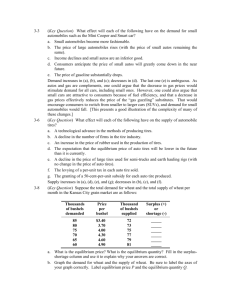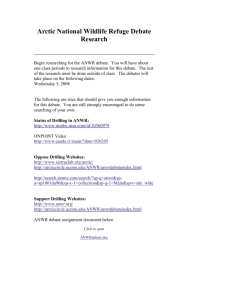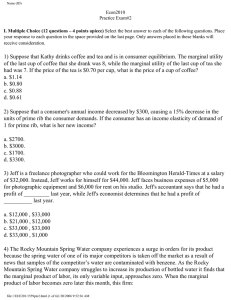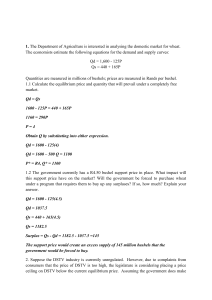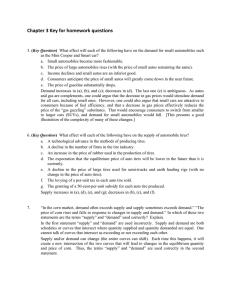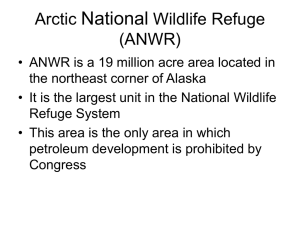Chapters 1-3 Homework - Shana M. McDermott, PhD
advertisement
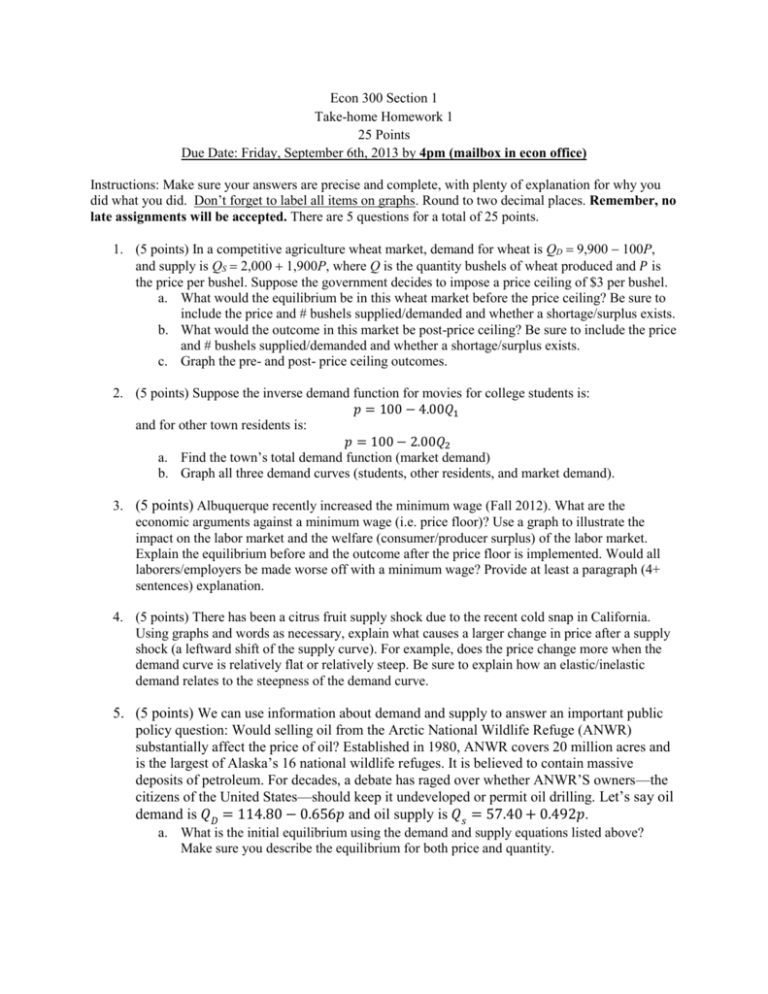
Econ 300 Section 1 Take-home Homework 1 25 Points Due Date: Friday, September 6th, 2013 by 4pm (mailbox in econ office) Instructions: Make sure your answers are precise and complete, with plenty of explanation for why you did what you did. Don’t forget to label all items on graphs. Round to two decimal places. Remember, no late assignments will be accepted. There are 5 questions for a total of 25 points. 1. (5 points) In a competitive agriculture wheat market, demand for wheat is QD 9,900 100P, and supply is QS 2,000 1,900P, where Q is the quantity bushels of wheat produced and 𝑃 is the price per bushel. Suppose the government decides to impose a price ceiling of $3 per bushel. a. What would the equilibrium be in this wheat market before the price ceiling? Be sure to include the price and # bushels supplied/demanded and whether a shortage/surplus exists. b. What would the outcome in this market be post-price ceiling? Be sure to include the price and # bushels supplied/demanded and whether a shortage/surplus exists. c. Graph the pre- and post- price ceiling outcomes. 2. (5 points) Suppose the inverse demand function for movies for college students is: 𝑝 = 100 − 4.00𝑄1 and for other town residents is: 𝑝 = 100 − 2.00𝑄2 a. Find the town’s total demand function (market demand) b. Graph all three demand curves (students, other residents, and market demand). 3. (5 points) Albuquerque recently increased the minimum wage (Fall 2012). What are the economic arguments against a minimum wage (i.e. price floor)? Use a graph to illustrate the impact on the labor market and the welfare (consumer/producer surplus) of the labor market. Explain the equilibrium before and the outcome after the price floor is implemented. Would all laborers/employers be made worse off with a minimum wage? Provide at least a paragraph (4+ sentences) explanation. 4. (5 points) There has been a citrus fruit supply shock due to the recent cold snap in California. Using graphs and words as necessary, explain what causes a larger change in price after a supply shock (a leftward shift of the supply curve). For example, does the price change more when the demand curve is relatively flat or relatively steep. Be sure to explain how an elastic/inelastic demand relates to the steepness of the demand curve. 5. (5 points) We can use information about demand and supply to answer an important public policy question: Would selling oil from the Arctic National Wildlife Refuge (ANWR) substantially affect the price of oil? Established in 1980, ANWR covers 20 million acres and is the largest of Alaska’s 16 national wildlife refuges. It is believed to contain massive deposits of petroleum. For decades, a debate has raged over whether ANWR’S owners—the citizens of the United States—should keep it undeveloped or permit oil drilling. Let’s say oil demand is 𝑄𝐷 = 114.80 − 0.656𝑝 and oil supply is 𝑄𝑠 = 57.40 + 0.492𝑝. a. What is the initial equilibrium using the demand and supply equations listed above? Make sure you describe the equilibrium for both price and quantity. b. Now incorporate a negative oil shock of 6 million barrels a day, due to a hurricane in the Gulf of Mexico. Without the ANWR production, how much will prices rise compared to the equilibrium price in part a.? c. Still assuming a negative oil shock of 6 million barrels a day, how much will prices rise if the ANWR produces 0.8 million barrels of oil a day? Compare your new price to the equilibrium price in part a. d. Given your analysis from parts b. and c., should the U.S. permit oil drilling? (Note: of course, other analysis like environmental valuation would have to be done before you could completely answer this question.)


